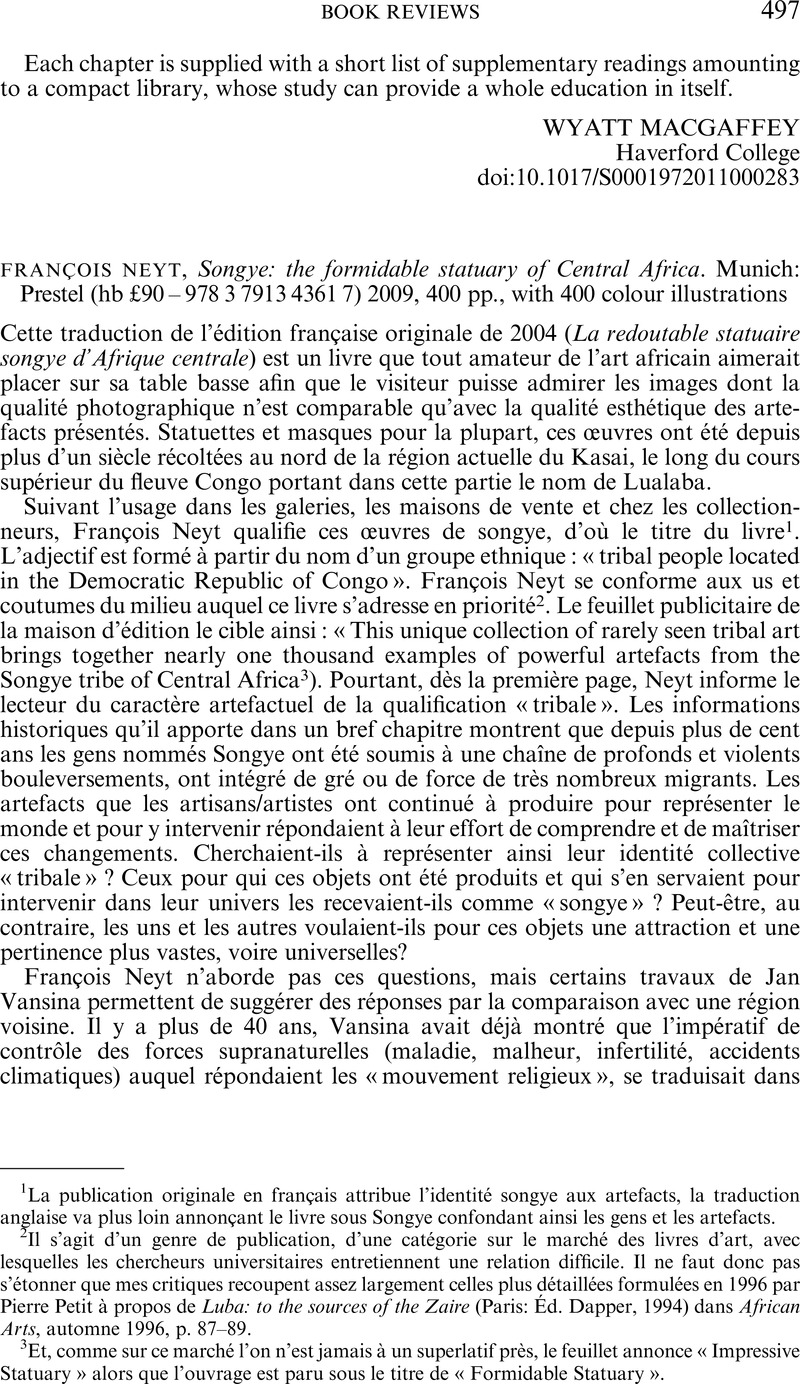No CrossRef data available.
Article contents
François Neyt, Songye: the formidable statuary of Central Africa. Munich: Prestel (hb £90 – 978 3 7913 4361 7) 2009, 400 pp., with 400 colour illustrations
Published online by Cambridge University Press: 22 July 2011
Abstract

- Type
- Reviews
- Information
- Copyright
- Copyright © International African Institute 2011
References
1 La publication originale en français attribue l'identité songye aux artefacts, la traduction anglaise va plus loin annonçant le livre sous Songye confondant ainsi les gens et les artefacts.
2 Il s'agit d'un genre de publication, d'une catégorie sur le marché des livres d'art, avec lesquelles les chercheurs universitaires entretiennent une relation difficile. Il ne faut donc pas s'étonner que mes critiques recoupent assez largement celles plus détaillées formulées en 1996 par Pierre Petit à propos de Luba: to the sources of the Zaire (Paris: Éd. Dapper, 1994) dans African Arts, automne 1996, p. 87–89.
3 Et, comme sur ce marché l'on n'est jamais à un superlatif près, le feuillet annonce « Impressive Statuary » alors que l'ouvrage est paru sous le titre de « Formidable Statuary ».
4 Being Colonized: the Kuba experience in rural Congo, 1880–1960, Madison WI: University of Wisconsin Press, 2010.
5 David Newbury (The Land Beyond the Mists: essays on identity and authority in precolonial Congo and Rwanda, Athens OH: Ohio University Press, 2009, pp. 9–10) caractérise la situation ainsi :« […] they identified culture with race, they assumed that broad cultural/racial groups acted as single (internally homogenous) … agency, and they took it for granted that racial/cultural groups were organized in a hierarchical fashion. There is an implicit assumption in these works that the structures of African societies observed during colonial rule could simply be extrapolated into the distant past, thus effacing the effects on African societies of both colonial influences and African agency within that colonial context. … what is most surprising is that these assumptions seemed to intensify over time, as researchers became further removed from local testimony […] a rigid intellectual framework (which also increasingly reinforced colonial administrative thinking) became self-perpetuating. »




